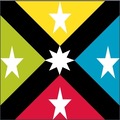Layouts divide pages on your site into different columns or regions where content can be placed.
Backdrop's primary tool for positioning content is through Layouts. The Layout module allows you to assign specific "templates" to your site or to specific pages on your site. A "layout template" is the template that defines regions in which pieces of content may be placed.
Definitions
- Layout - a configuration in which a particular layout template has been assigned to a website path. The Default layout applies the default template to all paths without a specified layout.
- Layout template - a page design created with HTML markup and PHP variables that define regions in which pieces of content may be placed
- Stand-alone layout - a stand-alone layout will only ever affect a single page on the site. The layout itself generates this page. A good example of a stand-alone layout is the default Home page.
- Dynamic layout - a dynamic layout is a layout that can affect multiple pages. In this case, the pages that are affected are always generated by other sources. This type of layout will require the "Existing page content" block.
https://docs.backdropcms.org/documentation/layouts-and-templates
- Mini Layouts - are not covered in the main documentation, because they are not part of a default Backdrop installation. However, Mini Layouts is a powerful contrib module that we have used as part of the Welcome Module Recipe and is worth experimenting with.
The Mini Layout module is no longer in testing phase, it is available for live sites. Some of the details may have changed slightly since this video was made, but it should still be a valuable resource. Mini Layouts are used as part of the Welcome module, which you may be using with this content.
